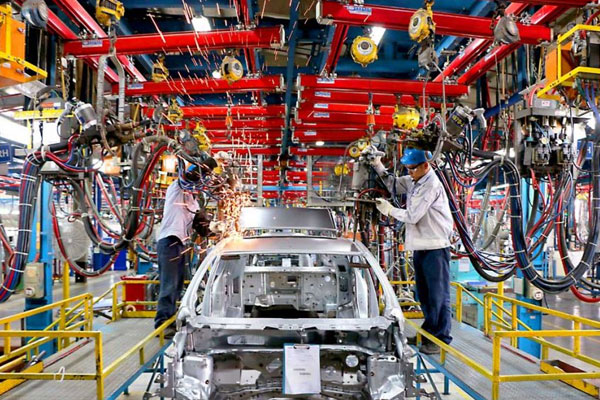Revolutionizing Auto Manufacturing: The Rise of Lightweight Materials

As the automotive industry continues to evolve, manufacturers are increasingly turning to lightweight materials to enhance performance, fuel efficiency, and sustainability. Developments in lightweight materials have revolutionized auto manufacturing, making vehicles lighter and more efficient without compromising safety or durability. In this article, we explore the latest advancements in lightweight materials for auto manufacturing.
1. Aluminum
Aluminum is widely recognized as one of the most popular lightweight materials used in auto manufacturing. It offers excellent strength-to-weight ratio, corrosion resistance, and recyclability. By incorporating aluminum components, automakers can significantly reduce a vehicle s weight, improving fuel efficiency and handling. The use of aluminum in auto manufacturing has become increasingly prevalent in various vehicle parts, including body panels, engine blocks, and suspension components.
2. Carbon Fiber Reinforced Polymers (CFRP)
Carbon fiber reinforced polymers, commonly known as CFRP, have gained significant traction in the automotive industry. CFRP is incredibly lightweight, yet incredibly strong, making it an ideal choice for auto manufacturers looking to reduce weight without sacrificing structural integrity. It is commonly used in the production of body panels, chassis, and interior components. However, the high cost of carbon fiber and the complexity of manufacturing processes have limited its widespread adoption.
3. Magnesium
Magnesium is another lightweight material that has been increasingly utilized in auto manufacturing. It is 75% lighter than steel and offers excellent strength and stiffness properties. Magnesium components can significantly reduce a vehicle s weight, leading to improved fuel efficiency and performance. The use of magnesium is particularly prevalent in transmission cases, engine blocks, and steering columns.
4. High-Strength Steel

While steel is not typically associated with lightweight materials, advancements in high-strength steel have made it a viable option for auto manufacturers. High-strength steel offers exceptional strength and durability while being lighter than conventional steel. It allows for the creation of lighter vehicle structures without compromising safety. High-strength steel is commonly used in safety-critical areas such as door beams, roof reinforcements, and front-end structures.
5. Polymer Composites
Polymer composites, such as glass fiber reinforced polymers (GFRP), are gaining popularity in auto manufacturing. These composites combine lightweight properties with high strength and impact resistance. They are commonly used in the production of components like bumpers, hoods, and fenders. Polymer composites offer improved fuel efficiency, reduced emissions, and increased design flexibility.
The automotive industry is witnessing a transformative shift towards lightweight materials in auto manufacturing. Aluminum, carbon fiber reinforced polymers, magnesium, high-strength steel, and polymer composites are driving this revolution by offering weight reduction without compromising safety and performance. As advancements continue, we can expect to see further innovations in lightweight materials, enabling the production of more fuel-efficient, sustainable, and high-performance vehicles.



